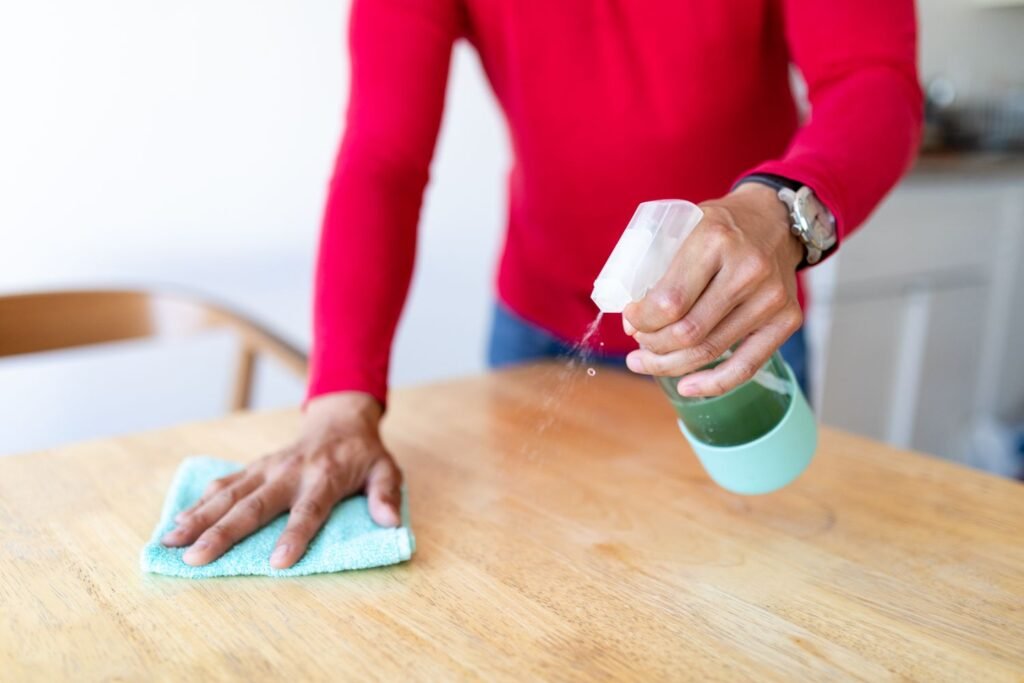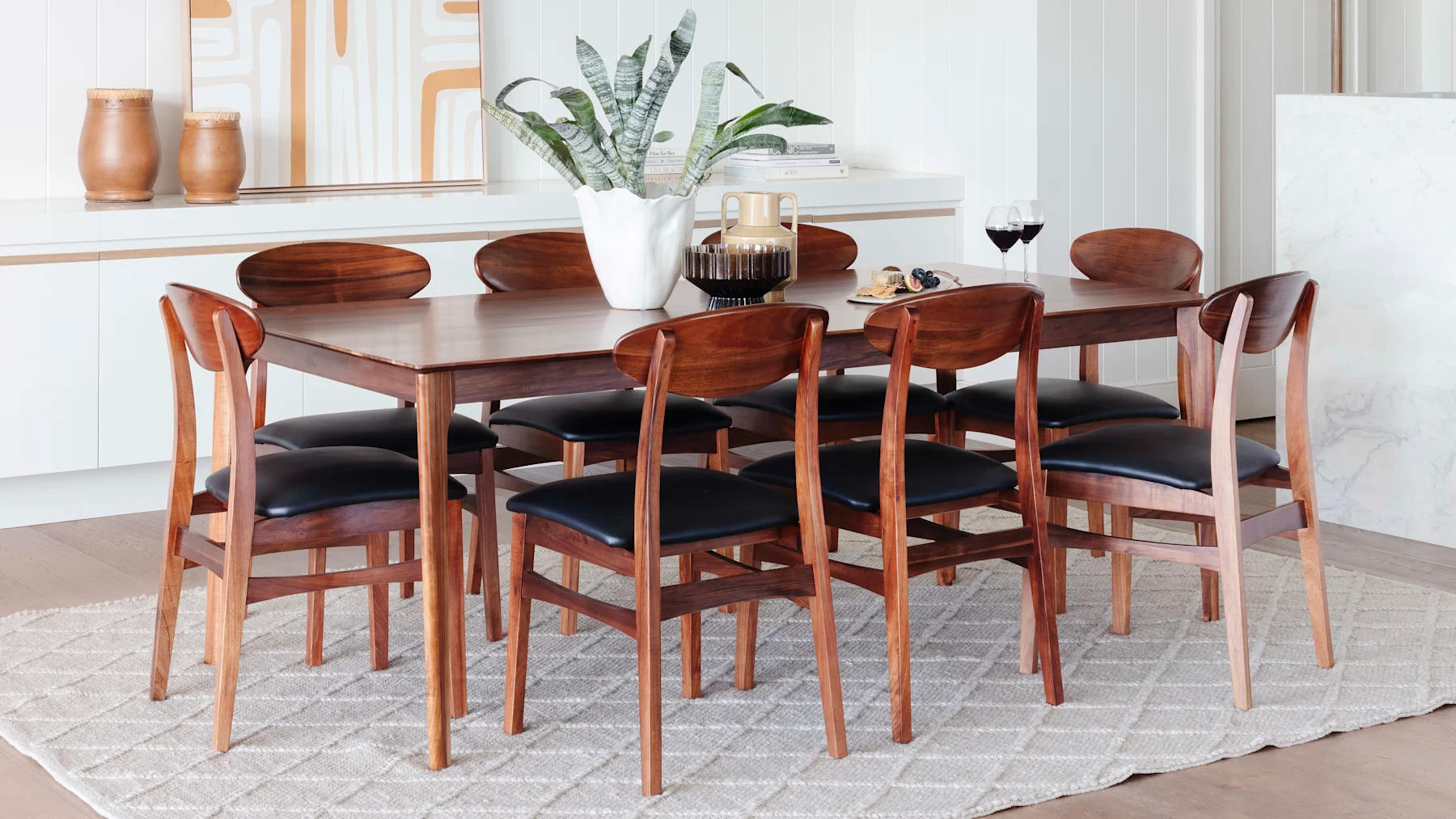
How to Care for Timber Kitchen Table
A timber kitchen table is often the heart of a home, where family meals, gatherings, and conversations take place. It’s no surprise that maintaining this important piece of furniture is essential. Caring for your timber kitchen table properly will help preserve its beauty, protect it from everyday wear and tear, and ensure it lasts for many years. In this guide, we’ll go over the best practices for keeping your timber kitchen table in top condition, from cleaning to protecting and restoring its shine.

Regular Cleaning
The first step in caring for your timber kitchen table is establishing a consistent cleaning routine. Dirt, spills, and food crumbs can accumulate quickly, especially in a high-traffic area like the kitchen. Regular cleaning is key to preserving the finish and preventing stains or scratches.
Cleaning Tips:
-
Use a soft cloth: When wiping down your timber table, always use a soft microfiber or cotton cloth. Harsh materials like sponges or abrasive scrubbers can scratch or damage the surface.
-
Mild cleaning solution: For routine cleaning, mix a few drops of mild dish soap with warm water. Dip the cloth into the solution, wring it out, and gently wipe down the surface. Avoid using excess water, as too much moisture can harm the wood.
-
Dry immediately: After cleaning, dry the table with a clean, dry cloth to remove any leftover moisture. Timber can warp or swell if it’s left damp for extended periods.
Protecting from Stains and Spills
The kitchen is a place where spills and stains are inevitable. However, caring for your timber kitchen table means taking steps to prevent them from ruining the surface. Simple protection strategies can go a long way in maintaining the wood’s natural finish.
Protection Tips:
-
Use placemats and coasters: Always place placemats under dishes, bowls, or hot cookware. Coasters should be used under glasses and mugs to prevent water rings from forming.
-
Avoid direct heat: Never place hot pots or pans directly on the table. Always use trivets or heat pads to protect the surface from heat damage.
-
Clean spills immediately: If food or liquid spills on the table, clean it up immediately with a damp cloth to prevent staining. The longer the spill sits, the more likely it is to seep into the wood, causing damage.
Polishing and Oiling for Protection
Over time, the natural oils in the wood can wear off, leaving your timber kitchen table looking dull and dry. Regular polishing and oiling can restore its shine, nourish the wood, and provide an extra layer of protection against moisture and dirt.
Polishing and Oiling Tips:
-
Use wood polish: Choose a polish that’s suitable for your type of timber. Natural wood polish can enhance the shine and help protect the surface. Apply a small amount to a soft cloth and rub it into the wood in circular motions, following the grain of the wood.
-
Apply wood oil: If your table is made from untreated timber or has a matte finish, you can use a natural oil like linseed oil or tung oil. These oils nourish the wood, keeping it hydrated and preventing cracking or drying.
-
Avoid over-polishing: Too much polish can create a buildup, which may leave the surface feeling sticky or greasy. Apply sparingly and wipe off any excess.
Repairing Minor Damage
Even with proper care, your timber kitchen table may encounter some minor scratches, dents, or water rings. Knowing how to repair these imperfections is an essential part of caring for your timber kitchen table and keeping it looking like new.
Repair Tips:
-
Fixing scratches: Small scratches can be easily fixed with a wood filler or touch-up marker that matches the color of the wood. Apply the filler to the scratch, smooth it out with a putty knife, and allow it to dry before sanding lightly and polishing the area.
-
Removing water rings: If a water ring or stain appears, you can use a mixture of baking soda and water. Gently rub the paste into the stained area with a soft cloth, and the stain should lift. For deeper stains, a professional refinishing might be needed.
-
Fixing dents: To repair dents, place a damp cloth over the dent and gently iron it with a warm iron. The steam will help lift the dent, allowing the wood to return to its original shape. Once done, buff the area and reapply the finish if necessary.
Preventing Sun Damage
Timber can be affected by exposure to direct sunlight, causing it to fade, dry out, or become brittle. Protecting your timber kitchen table from sun damage is vital for its long-term care.
Prevention Tips:
-
Use curtains or blinds: To minimize UV exposure, close curtains or blinds during the hottest parts of the day. You can also use UV-protective window film if your kitchen has a lot of natural light.
-
Rearrange furniture: If your table is located near a window, consider moving it further from direct sunlight. Alternatively, rotate the position of the table every few months to ensure even exposure to light.
-
Use tablecloths: If you don’t want to rearrange your furniture, consider using a tablecloth to shield the table’s surface from direct UV rays.
Climate Control and Humidity
Wood is sensitive to changes in temperature and humidity. If the air is too dry or too humid, it can cause your timber kitchen table to crack, warp, or swell. Controlling the climate in your kitchen is essential for caring for your timber kitchen table.
Climate Control Tips:
-
Maintain steady humidity: Aim for a humidity level of 40-60% to keep the wood in optimal condition. If your home is very dry, consider using a humidifier, especially in winter months.
-
Avoid sudden temperature changes: Keep your timber kitchen table away from sources of direct heat, such as stoves, radiators, or heaters. This will prevent the wood from drying out or cracking.
-
Use a dehumidifier: If your kitchen is prone to high humidity, a dehumidifier can help maintain the right moisture levels in the air, preventing the wood from expanding or warping.
Conclusion
Caring for your timber kitchen table involves regular cleaning, proper protection, and occasional maintenance to keep the wood looking beautiful and functioning properly. By following these simple tips—such as cleaning spills promptly, polishing regularly, and managing humidity—you can ensure that your table remains a functional, beautiful centerpiece in your kitchen for years to come. Whether it’s through careful maintenance or minor repairs, timber furniture can maintain its elegance and charm with the right care.




